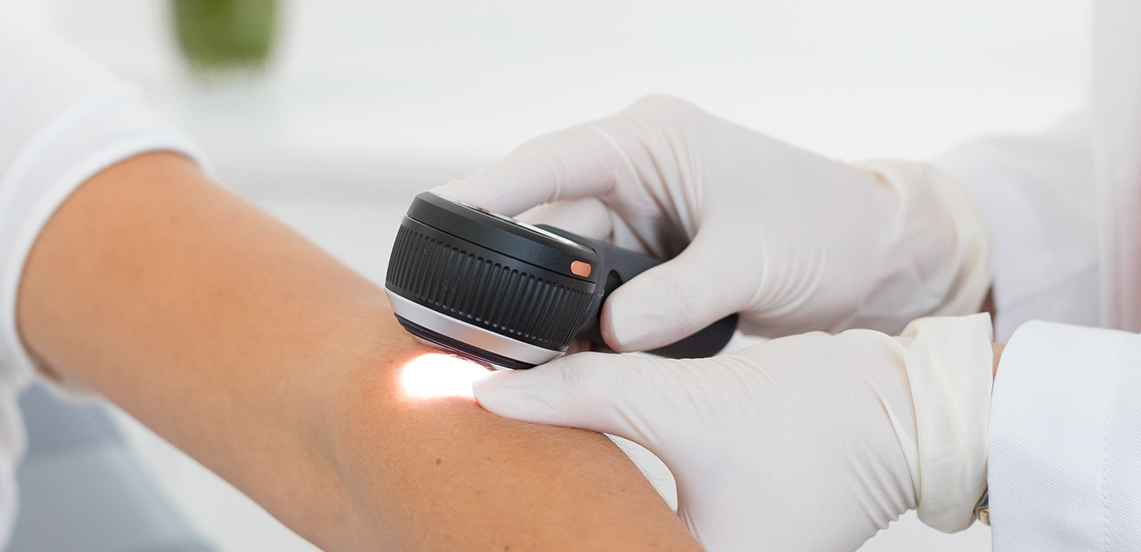The skin is our largest organ, thus it is exposed and susceptible to a wide range of environmental damage. Skin cancer results when skin cells incur DNA damage that goes unresolved, triggering mutations, and unmitigated growth. This rapid and unregulated growth of abnormal cell presents as a cancerous lesion. At Greenwich Point Dermatology in Greenwich, CT, our team of Board Certified Dermatologists are experts in the diagnosis and treatment of a variety of skin cancers.
What causes skin cancer?
Most often, ultraviolet (UV) radiation from the sun or tanning beds causes DNA damage to skin cells, but sometimes heredity can play a factor.
What are the types of skin cancer?
There are several types of cancers and precancerous lesions that Dr. Dolder has extensive experience in diagnosing and treating.
Actinic keratosis (AK) are precancerous lesions that are scaly in appearance and can be white, pink, red, or flesh-colored. If not treated early, they can eventually transform into a squamous cell carcinoma (SCC). Read more about AK here. Atypical moles are unusual looking moles, meaning they have an irregular border, are large in size, abnormal in color, or asymmetrical. They resemble melanoma, but upon biopsy are found to be benign. Read more about atypical moles here.
Basal cell carcinoma (BCC) may look like shiny bumps, open sores, red patches, or pink growth. They a abnormal lesions resulting from uncontrolled growth of the basal cells in the skin. Swift treatment can limit their spread. Read more about BCC here.
Melanoma is the deadliest form of skin cancer resulting from an uncontrolled growth of melanocytes. Some develop from moles and are often black or brown in color, but they can also be flesh-colored, red, purple, blue, pink, or even white. Complete removal of these. Read more about melanoma here.
Squamous cell carcinoma (SCC) results from uncontrolled growth of abnormal squamous cells in the skin. They look like scaly red patches, open sores, and even warts that often crust or bleed. Read more about SCC here.
How do I prevent skin cancer?
To reduce the risk of developing skin cancer, wear sunscreen with at least SPF 30 or higher and reduce exposure to the sun at peak sunny times of day. We’re advocates for sun protection gear with a UPF factor for prolonged periods of exposure. Also, it is always a good idea to avoid tanning beds.
Dr. Dolder strongly recommends getting an annual skin check to monitor the progress of any abnormal or suspicious lesions.
Abnormal lesions are characterized by the ABCDEs. If you notice any of the following characteristics in one of your moles, get in touch to get a comprehensive exam.
- A: Asymmetrical in appearance (in color, size,shape)
- B: Irregular or uneven border
- C: Variety of colors such as brown, black, tan, red, white, orblue
- D: Large diameter, i.e. bigger than a pencileraser
- E: Evolving in shape, color, size, or symptom (i.e. begins to bleed, itch, orcrust)
If you suspect you have an abnormal lesion or would like to schedule an annual skin check, contact Greenwich Point Dermatology here, or email info@greenwichpointderm.com.

